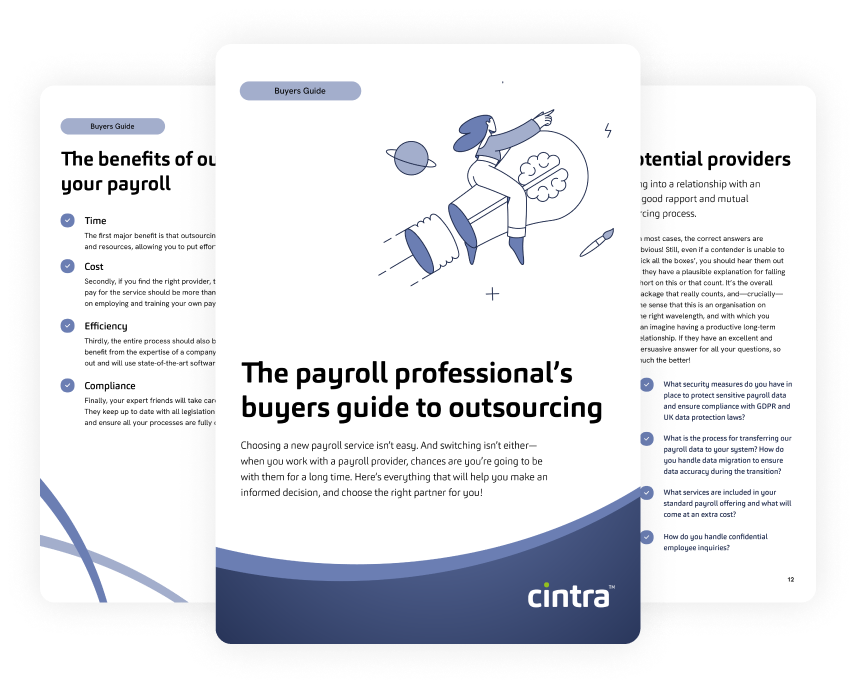Payroll isn’t just about paying people on time—it’s the engine that keeps your business running smoothly. Get it right, and you keep your team happy, stay on the right side of the law, and make smarter financial decisions. But when payroll goes wrong? The impact can be huge. From fraud that can quietly drain your finances, to human errors that snowball into costly fines, the payroll risks are real.
Let’s break down five of the most common payroll risks in 2025—and show you how to steer clear of them.
5 payroll risks and how to avoid them
Timekeeping fraud
Imagine Daisy works remotely for a small design agency. Her job requires her to log her hours each day, which she then submits at the end of the week.
There’s no automated system—just a shared spreadsheet. Her manager trusts her, and Daisy usually is spot on.
But one week, she realises she forgot to log her hours, so she estimates—adding a few extra hours just to be safe. It doesn’t seem like a big deal, but over time, these small “top-ups” can lead to significant overpayments.
This is a classic case of timekeeping fraud, even if it’s unintentional at first.
So, how can you prevent this?
- Automated time-tracking tools (like apps that log when someone starts and stops work) remove the need for guesswork. No more relying on memory or fudging figures.
- Manager approvals provide a second pair of eyes to catch any inconsistencies.
- Regular audits help spot patterns—like someone consistently claiming overtime with no clear justification.
- And finally, segregation of duties—where one person logs the hours and another verifies them—makes it harder for errors or fraud to slip through unnoticed.
Fraudulent expense claims
Let’s say James travels to London for a client meeting.
After the trip, he submits an expense claim for his train ticket, lunch, and a taxi ride. But here’s the thing—he also sneaks in a receipt for a £60 dinner he had with friends that same evening. It wasn’t related to work, but it gets lumped in with the rest and, without much scrutiny, gets reimbursed.
That’s a textbook example of a fraudulent expense claim—where employees exaggerate or make up expenses. It might be one meal here, a few extra miles there, but over time it adds up and quietly drains company funds.
How can you stop this from happening?
- First, it starts with a clear company expense policy. Employees need to know exactly what’s allowed and what’s not.
- Requiring receipts for every claim builds transparency and makes it harder to submit made-up costs.
- Regular audits help catch unusual patterns or suspicious claims.
- Using expense management software like Capture Expense adds another layer of protection. These systems can flag questionable entries and streamline approvals.
Cybersecurity threats
Emma works in HR and handles payroll for a mid-sized company.
One morning, she gets an email that looks like it’s from the finance director, asking for the latest payroll file—ASAP. It’s got the right logo, signature, and usual tone. Without thinking twice, Emma replies with the attachment.
A few hours later, IT alerts the team: the email was a phishing scam. The sender wasn’t the finance director—it was a cybercriminal. Now, the personal and financial details of every employee are in the wrong hands.
This is exactly why cybersecurity threats are a big deal in payroll. That data includes salaries, bank details, National Insurance numbers—everything a hacker would need to commit fraud or identity theft.
So, how do you avoid a nightmare like this?
- First, implement strong payroll security protocols. Think data encryption, so even if files are intercepted, they can’t be read. Add multi-factor authentication (MFA), so login details alone aren’t enough to access sensitive systems.
- Limit access: not everyone needs to see payroll info. Set user permissions so only authorised staff can view or edit this data.
- Employee training is crucial—Emma’s mistake wasn’t malicious; she just didn’t recognise the scam. Teaching staff how to spot suspicious emails, or unexpected requests goes a long way.
Get the latest insights and best practice guides, direct to your inbox.
Failure to stay updated with legislation
Let’s say there’s a change to statutory sick pay rules in the UK.
The government updates the eligibility criteria, but Lisa, who runs payroll for a local company, misses the announcement. A few months later, she processes sick pay using the old rules—and pays several employees less than they’re legally entitled to.
Word gets out, employees are frustrated, and HMRC flags the mistake during a routine compliance check. Now the company’s not only facing back payments, but also potential fines and a dent to its reputation.
This is a classic example of the risk that comes from failing to stay updated with legislation. Payroll laws and tax regulations change more often than most people realise, and if you’re not on top of it, things can go wrong quickly.
So how do you avoid this kind of slip-up?
- Regular reviews and audits help spot outdated processes.
- Bringing in payroll consultants or legal experts can be invaluable—they stay on top of new payroll legislation, so you don’t have to.
- Implement an automated payroll system like Cintra, which stays up to date with the latest legislation.
Relying on a single person for all payroll tasks
Tom has been running payroll single-handedly at a growing SaaS company for years.
He knows the system inside out, handles everything from timesheets to payroll deductions, and rarely takes time off. Everyone leans on Tom.
Then, one Friday afternoon, Tom unexpectedly falls ill—and payroll’s due on Monday.
Panic sets in. No one else knows the process. There’s no documentation, no backup, and the software feels like a foreign language to everyone else. As a result, payroll is delayed, employees aren’t paid on time, and trust in the company takes a hit.
This scenario highlights a serious but common issue: relying on a single person for all payroll tasks. If that person is suddenly unavailable, the entire system grinds to a halt. Errors can go unnoticed, deadlines get missed, and the company is left exposed.
So, how can you avoid this kind of payroll risk?
- Cross-train team members so more than one person understands how to run payroll.
- Document everything: step-by-step guides, login details (securely stored), and checklists make it easier for someone else to step in when needed.
- Outsourcing payroll can help. With Cintra’s payroll outsourcing services, you gain a dedicated team that makes sure payroll is processed accurately and on time—even if someone in your internal team is off sick.
Avoiding payroll risks is easier with Cintra’s unmatched hands-on support
Our team of seasoned payroll professionals doesn’t just offer support—we become an extension of your business, combining industry expertise with cutting-edge technology to keep your payroll accurate, compliant, and stress-free.
If you want to speak to a real payroller today about how to avoid payroll risks, all you have to do is book a demo.

Payroll Outsourcing Buyers Guide
Download everything you need to know in your payroll outsourcing buyers journey—covering services and solutions in depth.
Download your buyers guide


